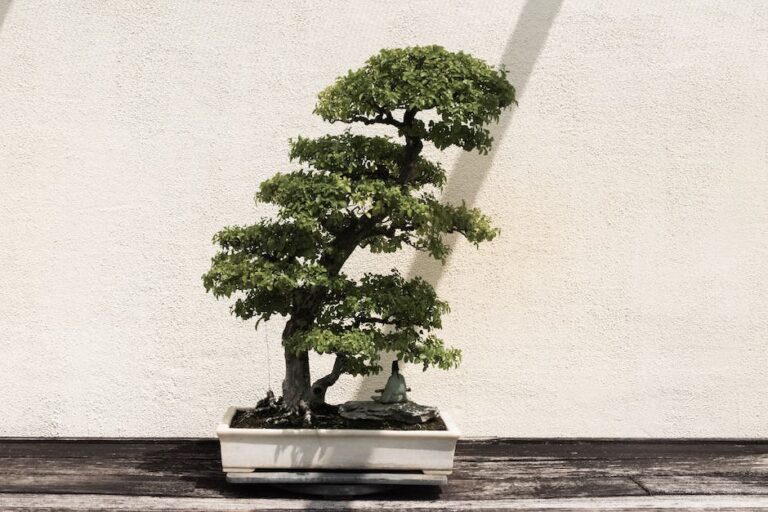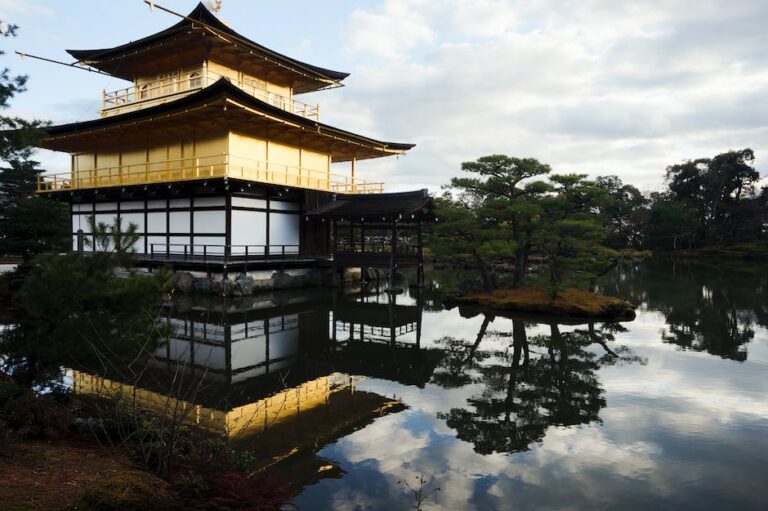How Does Bonsai Plants Grow
Do you ever wonder how those stunning bonsai plants grow?
Well, here’s a fascinating statistic to pique your curiosity: did you know that bonsai cultivation dates back over a thousand years?
In this article, we’ll explore the art of bonsai cultivation and delve into the essential factors that contribute to their growth.
From pruning techniques to proper watering and fertilization practices, we’ll cover it all.
Get ready to unlock the secrets to maintaining the health and vigor of these miniature marvels.
Key Takeaways
- Bonsai cultivation is a centuries-old practice that involves shaping and pruning miniature trees to create a beautiful aesthetic.
- Proper pruning techniques control the size, shape, and overall health of bonsai trees.
- Adequate sunlight, at least 4-6 hours a day, is crucial for bonsai trees to thrive.
- Potting, repotting, and maintaining bonsai trees require careful attention to soil moisture, environmental conditions, and regular pruning and trimming.
The Art of Bonsai Cultivation
The art of bonsai cultivation involves carefully shaping and pruning miniature trees to create a beautiful and balanced aesthetic. Bonsai styles encompass a range of techniques and designs, each with its own unique characteristics.
Some popular bonsai styles include formal upright, informal upright, cascade, semi-cascade, and windswept. To achieve these styles, bonsai enthusiasts rely on a variety of specialized tools.
These tools include concave cutters, branch cutters, knob cutters, wire cutters, and bonsai shears. Concave cutters are used to make precise cuts, while branch cutters are designed to remove larger branches. Knob cutters are used to remove unwanted knobs or protrusions from the trunk. Wire cutters are essential for shaping and guiding the branches, and bonsai shears are used for general pruning and maintenance.
With the right tools and techniques, bonsai cultivation becomes a fulfilling and artistic journey.
Essential Factors for Bonsai Growth
To ensure healthy growth and maintain the desired aesthetic shape of your bonsai tree, it is crucial to master proper pruning techniques. By selectively removing branches and foliage, you can control the tree’s size, shape, and overall health.
Additionally, providing your bonsai tree with adequate sunlight is essential for its growth and development. Sunlight is the primary source of energy for photosynthesis, which is vital for the tree’s nutrient production and overall vitality.
Proper Pruning Techniques
Pruning bonsai plants correctly involves being mindful of the specific techniques necessary for their growth. Proper bonsai care requires understanding the importance of pruning and how it affects the overall health and appearance of the plant. Here are some key bonsai pruning techniques to follow:
- Structural Pruning: This involves removing unwanted branches to create a balanced and aesthetically pleasing shape.
- Maintenance Pruning: Regularly trimming back new growth helps maintain the desired size and shape of the bonsai.
- Thinning: Removing excess foliage allows for better air circulation and light penetration, promoting healthy growth.
- Pinching: Gently pinching off the tips of new shoots encourages branching and denser foliage.
Adequate Sunlight Requirements
Adequate sunlight is crucial for the healthy growth and development of bonsai. Bonsai plants need direct sunlight for at least 4-6 hours a day to thrive. Insufficient sunlight can lead to weak growth, pale leaves, and poor overall health. The intensity and duration of sunlight should be carefully monitored to prevent sunburn or scorching of the leaves. Bonsai trees should be placed in an area with good air circulation and filtered sunlight during the hottest parts of the day. Additionally, the soil composition plays a vital role in providing the necessary nutrients and moisture to the bonsai plant. It is important to choose a well-draining soil mix that retains enough moisture without becoming waterlogged. The watering frequency should be adjusted according to the specific needs of the bonsai species, taking into consideration factors such as humidity, temperature, and soil moisture levels. A balance between adequate sunlight, proper soil composition, and appropriate watering frequency is essential for the healthy growth and development of bonsai plants.
| Sunlight Tips | Soil Tips |
|---|---|
| Place bonsai trees where they can receive direct sunlight for at least 4-6 hours a day. | Use well-draining soil mix that retains enough moisture without becoming waterlogged. |
| Monitor sunlight intensity and duration to prevent sunburn or scorching of the leaves. | Adjust watering frequency based on specific needs and environmental factors. |
| Provide filtered sunlight during the hottest parts of the day to prevent leaf damage. | Ensure good air circulation around bonsai trees to promote healthy growth. |
Pruning Techniques for Bonsai Plants
In order to shape bonsai trees through pruning, it’s essential to understand the key techniques involved. Pruning can be used to shape the overall form of the bonsai, as well as to refine the branches and foliage.
Timing is crucial when it comes to bonsai pruning. Different species have specific growth patterns and optimal times for pruning to ensure healthy growth and maintain the desired shape.
Shaping Bonsai With Pruning
To shape your bonsai, you’ll want to carefully trim the branches and foliage. This process involves using specific techniques and tools to achieve the desired shape and form. Here are some important bonsai shaping techniques:
- Pruning: Removing excess growth and shaping the branches using pruning shears or scissors.
- Wiring: Wrapping wire around branches to guide their growth and create desired shapes.
- Pinching: Gently removing new growth with your fingers to encourage denser foliage and branch development.
- Thinning: Removing some foliage to create an open and balanced appearance.
When it comes to pruning tools and equipment, there are a few essentials to have:
- Pruning shears: Used for precise cuts on smaller branches.
- Branch cutters: Designed for thicker branches that cannot be pruned with shears.
- Wire cutters: Necessary for removing wire from branches once shaping is complete.
- Jin pliers: Used to create deadwood features by stripping bark and shaping branches.
Timing for Bonsai Pruning
When pruning your bonsai, make sure you consider the appropriate timing for each specific species to ensure healthy growth and optimal results. Pruning at the right time is crucial for the overall health and shape of your bonsai. Different species have different growth patterns and requirements, so it’s essential to know the best time to prune your bonsai. Here is a table outlining the best time for pruning some common bonsai species:
| Species | Best Time for Pruning |
|---|---|
| Juniper | Spring and early summer |
| Pine | Late winter or early spring |
| Maple | Late winter or early spring |
| Azalea | After flowering |
In addition to considering the best time for pruning, you should also consider the frequency. Most bonsai trees require regular pruning to maintain their desired shape and size. However, the frequency may vary depending on the species and the specific needs of your bonsai. It’s important to observe the growth patterns and adjust the pruning frequency accordingly. By understanding the best time and frequency for pruning your bonsai, you can promote healthy growth and achieve the desired results.
Watering and Fertilization Practices for Bonsai
Proper watering and fertilization are essential for bonsai plants to thrive. To ensure the health and vitality of your bonsai, here are some important techniques to follow:
-
Fertilization Techniques:
-
Use a balanced, slow-release bonsai fertilizer to provide essential nutrients.
-
Apply fertilizer during the growing season, typically from early spring to late summer.
-
Avoid over-fertilizing, as this can lead to root burn and other issues.
-
Adjust the fertilizer concentration based on the specific needs of your bonsai species.
-
Watering Frequency:
-
Water your bonsai regularly, ensuring that the soil remains evenly moist but not waterlogged.
-
The frequency of watering depends on factors such as the size of the pot, soil type, and environmental conditions.
-
Check the moisture level of the soil by inserting a finger about an inch deep. If it feels dry, it’s time to water.
-
Avoid allowing the soil to completely dry out, as this can harm the roots and lead to dehydration.
Potting and Repotting Bonsai Trees
When repotting your bonsai tree, it’s important to choose the right pot size to promote healthy root growth. The size of the pot should be proportional to the size of the tree, allowing enough space for the roots to grow and develop.
Bonsai trees require a specific potting technique to ensure their vitality and longevity. Start by removing the tree from its current pot, gently untangling the roots and trimming any damaged or excessively long ones. Then, place the tree in the new pot, making sure it is centered and at the desired height.
Fill the pot with well-draining bonsai soil, pressing it firmly to secure the tree. Repotting frequency depends on the tree’s growth rate, but generally, it is recommended every one to three years to maintain proper root health and prevent pot-bound conditions.
Tips for Maintaining Bonsai Health and Vigor
To maintain the health and vigor of your bonsai, it’s important to regularly check for signs of pests or diseases. Here are some tips to help you maintain the aesthetics of your bonsai while preventing diseases:
-
Inspect regularly: Regularly check your bonsai for any signs of pests or diseases. Look for discolored leaves, wilting, or unusual growth patterns.
-
Prune and trim: Regular pruning and trimming of your bonsai will not only help maintain its shape and size but also remove any diseased or infected parts.
-
Proper watering: Water your bonsai carefully, ensuring that the soil is moist but not waterlogged. Overwatering can lead to root rot and other fungal diseases.
-
Sterilize tools: Clean and sterilize your bonsai tools after each use to prevent the spread of diseases. This includes pruning shears, scissors, and wire cutters.
Conclusion
In conclusion, growing bonsai plants requires careful attention to various factors such as pruning, watering, fertilization, and potting.
By understanding the art of bonsai cultivation and implementing essential techniques, you can ensure the health and vigor of your bonsai trees.
Remember, like a delicate dance, each step in the bonsai growth process contributes to the beauty and grace of these miniature trees.
So, don’t hesitate to dive into the world of bonsai and let your green thumb blossom like a symphony of colors and shapes.


